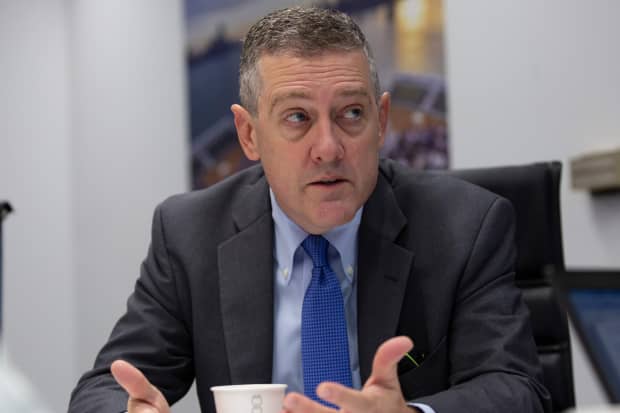This post was originally published on this site

St. Louis Federal Reserve Bank President James Bullard says the job recovery as COVID-19 persists has been remarkable, but more progress is necessary.
AFP/Getty Images
The U.S. labor market improved at a shockingly rapid pace this year compared with the aftermath of the 2008-2009 financial crisis, St. Louis Fed President James Bullard said Friday.
In a speech to the Economic Club of Memphis, Bullard also said the economy doesn’t need another massive stimulus package and a more targeted approach would suffice.
In his talk, Bullard noted that the payroll growth seen since the summer took four years to achieve in the last recession.
“Basically unemployment has come down from the peak very fast, I’m not sure you can really absorb how shocking this is,” he said.
Even broader economic trends “are way better than originally expected,” he added.
Read: U.S. adds 638,000 jobs in October and unemployment sinks to 6.9% in strong show for economy
While it is true that more progress is needed, economists were much more pessimistic about the economy in the wake of the pandemic than has been borne out by the data, he said.
Bullard’s perspective is much brighter than most other Fed officials.
Fed Chairman Jerome Powell has emphasized that about 10 million workers remain unemployed compared with pre-pandemic levels.
Powell has been urging Congress to pass more fiscal stimulus.
Read: Fed’s Williams says recent rise in Treasury yields is due to vaccine news, not inflation concerns
In his remarks, Bullard suggested more help from Congress was less urgent. He said that the federal government has already spent $3.15 trillion to combat the coronavirus pandemic and this is still boosting the economy now.
“The fiscal response was designed for a bigger shock than what actually occurred,” Bullard said.
Congress has authorized $3 trillion, “but so far, the hole that we have to fill is really only about $500 billion,” Bullard said.
The package was so big that there are enough resources to carry the economy into next year, he said.
“And then we can assess the situation in the first quarter,” he added.
Bullard said Congress could focus on more targeted relief for workers and businesses who are suffering disproportionately from the pandemic.
While admitting he was more optimistic than many about the economy, Bullard said he didn’t see any reason to think about raising interest rates off of the zero lower bound.
“We still have got a long climb to go. I think we have exactly the right monetary policy,” he said.
Bullard told reporters that he didn’t think the markets would react negatively if the Fed let its emergency lending programs expire at the end of the year. Investors know the Fed could quickly restart them if needed, he said.
The St. Louis Fed president stressed that the economy still faces downside risks. It was important that the public health sector continue to effectively fight the coronavirus.
A public education campaign might help get the disease under better control, he said. The virus seems to be spreading more in household situations than at business locations, he said.
The Dow Jones Industrial Average DJIA, +0.96% was up by 190 points on continued optimism about the prospects for vaccines for COVID-19.
The yield on the 10-year Treasury note TMUBMUSD10Y, 0.894% is up 0.0660 percentage point this week.

